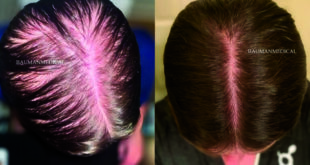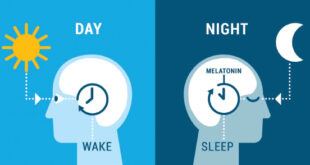 WHAT IS NEUROFEEDBACK?
WHAT IS NEUROFEEDBACK?
Neurofeedback, also known as EEG biofeedback, has been studied and practiced since the late 60’s. It is exercise for your brain; allowing you to see the frequencies produced by different parts of your brain in real-time and then through visual and auditory feedback, teaches the brain to better regulate itself. Neurofeedback can be used to help detect, stimulate, and/or inhibit activity in the brain safely and without medication. It can help restore a wider “range of motion” in brain states, much like physical therapy does for the body.
While the client sits comfortably watching a movie or pictures appear on the screen (a calm and focused state), the EEG equipment measures the frequency or speed at which electrical activity moves in the areas where electrodes have been placed. This information is sent to the therapist’s computer. The therapist is then able to determine what frequencies are out of balance. For example, when the EEG shows that you are making too many “slow” or “sleepy” waves (delta/theta) or too many “fast” waves (high beta), the therapist adjusts a reward band to encourage more balanced activity. This encouragement or “reward” happens through an auditory reinforcement of “beeps” and sometimes through visual reinforcement of changes on the screen.
HOW DOES A “BEEP” OR SOUND
TRAIN MY BRAIN TO WORK BETTER?
The auditory or sound reward that corresponds to an increase or decrease in desired brainwave activity is able to affect the brain on a neurological level. Auditory reward stimulates auditory pathways, impacts the vestibular system, and has many connections to the reticular activating system, which modulates wakefulness and attention. These systems operate in our brains without conscious effort. Therefore, neurofeedback teaches your brain through automated learning with little or no behavioral effort. Another way to say this is that neurofeedback involves operant conditioning or learning. This type of learning teaches us through a reinforced reward system. The auditory reward (beep) is delivered on a schedule of reinforcement that promotes optimal learning; not too hard and not too easy. This schedule of reinforcement or reward provides just the right amount of resistance to evoke a positive learning pattern.
WHY TRAIN YOUR BRAIN?
Mental clarity improves when you operate a calmer, more efficient brain. As you learn to slow down “inner chatter” or activate a “sleepy” brain, you become more effective at responding to stress and adapt more readily to different situations, both psychologically and physically. Parenting becomes less exhausting, appointments are more easily kept, decision-making improves, and mood swings and depression often lift.
Neurofeedback has also been shown to be of remarkable value with school-age children who experience focus and learning problems. Through brain training, children can learn to better concentrate on schoolwork, increase their frustration tolerance level, and are less prone to be overwhelmed with sensory overload while seated in a noisy classroom. With their thoughts more organized, they can focus more clearly on what others say to them and can begin to develop friendships and learn effectively.
WHAT TYPES OF CONDITIONS
DOES NEUROFEEDBACK HELP?
Symptoms of these conditions, among others, can improve through neurofeedback training:
• Anxiety
• Sleep disorders
• Depression
• ADD/ADHD
• Sensory processing disorder
• Bipolar disorder
• Seizure disorders
• Auditory/visual processing
• Chronic pain/Fibromyalgia
• Migraines/headaches
• Traumatic brain injuries
• Stroke
• Cognitive decline
• Peak performance
• Oppositional defiant disorder
• Rages/mood swings
• Attention/focus/concentration
• Reactive attachment disorder
• Autism/Asperger’s
• Learning disabilities
• Obsessive compulsive disorder
HOW DO I KNOW
IF NEUROFEEDBACK WILL WORK FOR ME?
Through our thirteen plus years of experience with neurofeedback, we have reached the point of having very high expectations for success in training. When such success is not forthcoming, or if the gains cannot hold, then there is usually a reason for that which needs to be pursued. In the normal course of events, neurofeedback ought to work with everybody. That is to say, nearly everyone should make gains that they themselves would judge to be worthwhile. Our brains are made for learning and skill-acquisition. On the other hand, we are working with many individuals and families whose expectations have been lowered by their past experience. And they need to see progress before they will share our optimism. We understand that. If your intention is to be a healthy, happy, functioning person; you may not “feel” that Neurofeedback is working. The measurement of improved learning in the brain is in the functioning or end result, not the intentions.
Our office works diligently with you to set and achieve realistic goals and gains with Neurofeedback. We are also open to investigating causes or changes in treatment if those goals
are not being met.
You should expect miracles with Neurofeedback treatment. However, what appears miraculous is really nothing more than the incredible capacity of our brains to recover function when given a chance.
WHAT IS A QEEG (Quantitative EEG)
OR BRAIN MAP AND DO I NEED ONE?
The QEEG is a quantitative EEG. It’s also called a brain map and does just that…it gives us a map of what is going on with the entire brain at one time. We attach electrodes to the whole head, 19 spots, and then record the brain waves with his eyes open for 5 minutes and with his eyes closed for 10 minutes. This recording is then sent to Advanced Psychological Services in North Carolina to be read and analyzed. They are able to not only give us a summary of significant findings but the report also shows the results of analyzing the data several different ways. The brain activity is not only compared spot by spot over the entire head, but we can also look at connections, symmetry, how different parts are communicating and all of this data is compared to a “normal” database of peers. It can help us see what areas need to be addressed more efficiently than just training spot by spot.
We don’t always need this data to make improvements in symptoms but we do recommend it in certain situations. A QEEG can also be helpful information when diagnosing and/or trying to decide the best medication/supplement recommendations.
HOW DO I GET STARTED?
Getting started is easy, just give us a call. The Brain and Wellness Center staff will answer all of your questions, and help you get scheduled. If you are wondering what services are best for you? We can help determine that at the time of the intake, in a telephone consultation, or you can schedule a face to face consultation and see our facility.
Call, email or message us today! Brain and Wellness Center, 7301 W. Palmetto Park Rd., Suite 102A, Boca Raton, FL 33433. (561) 206-2706, e-mail us at info@bocabraincenter.com, or text us at (561) 206-2706 or visit our website at www.BocaBrainCenter.com.
Renee Chillcott, LMHC
Renee Chillcott is a Licensed Mental Health Counselor that has been practicing Neurofeedback training since 2005. Renee holds a BA degree from The University of Central Florida and a Master’s Degree in Psychology from Nova Southeastern University. She is a Licensed Mental HealthCounselor and is the owner/operator of The Brain and Wellness Center, located in Boca Raton. At The Brain and Wellness Center, adults, teens, children and families enjoy a variety of services from multiple providers. Neurofeedback, Brain Mapping, Acupuncture, Nutritional Counseling, Learning Programs, and counseling are among a few of the services offered.
Check Also
WHAT IS MY CIRCADIAN RHYTHM AND WHY DOES IT MAKE ME FEEL SO “OFF”
By Renee Chillcott, LMHC Have you heard terms such as “biological clock” or “biorhythms”, or …
 South Florida Health and Wellness Magazine Health and Wellness Articles
South Florida Health and Wellness Magazine Health and Wellness Articles




